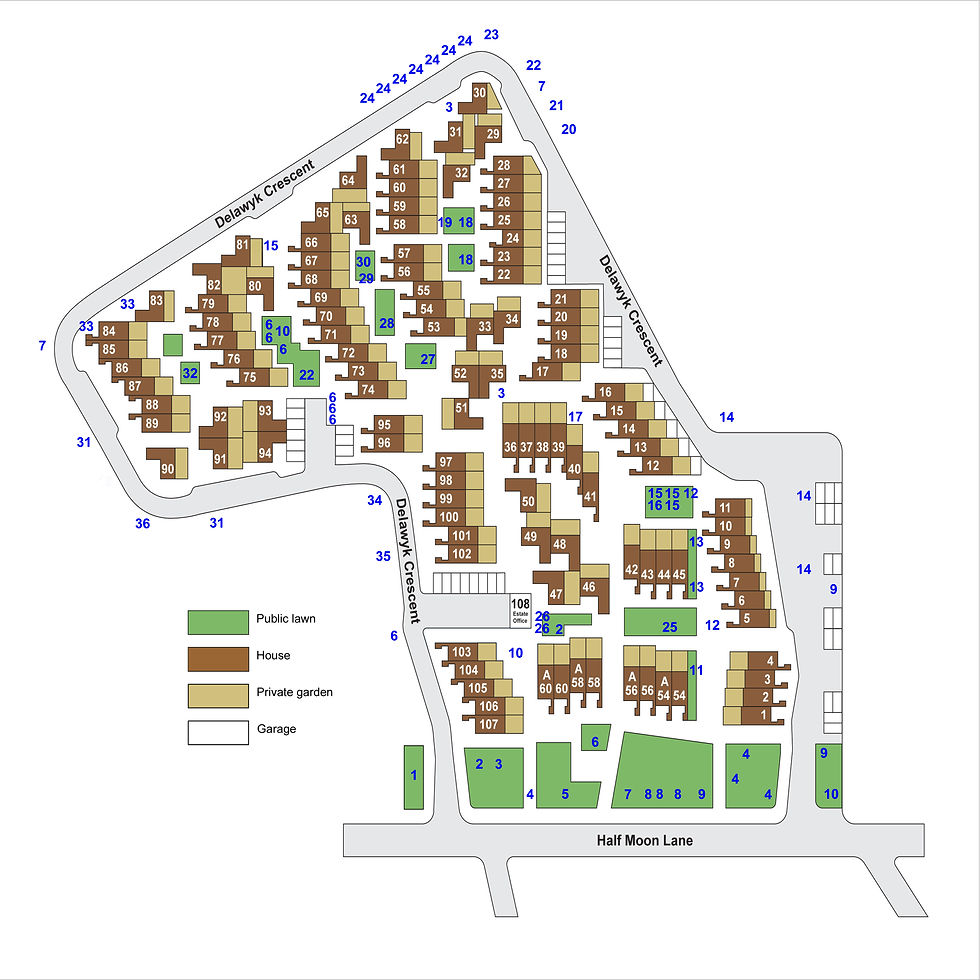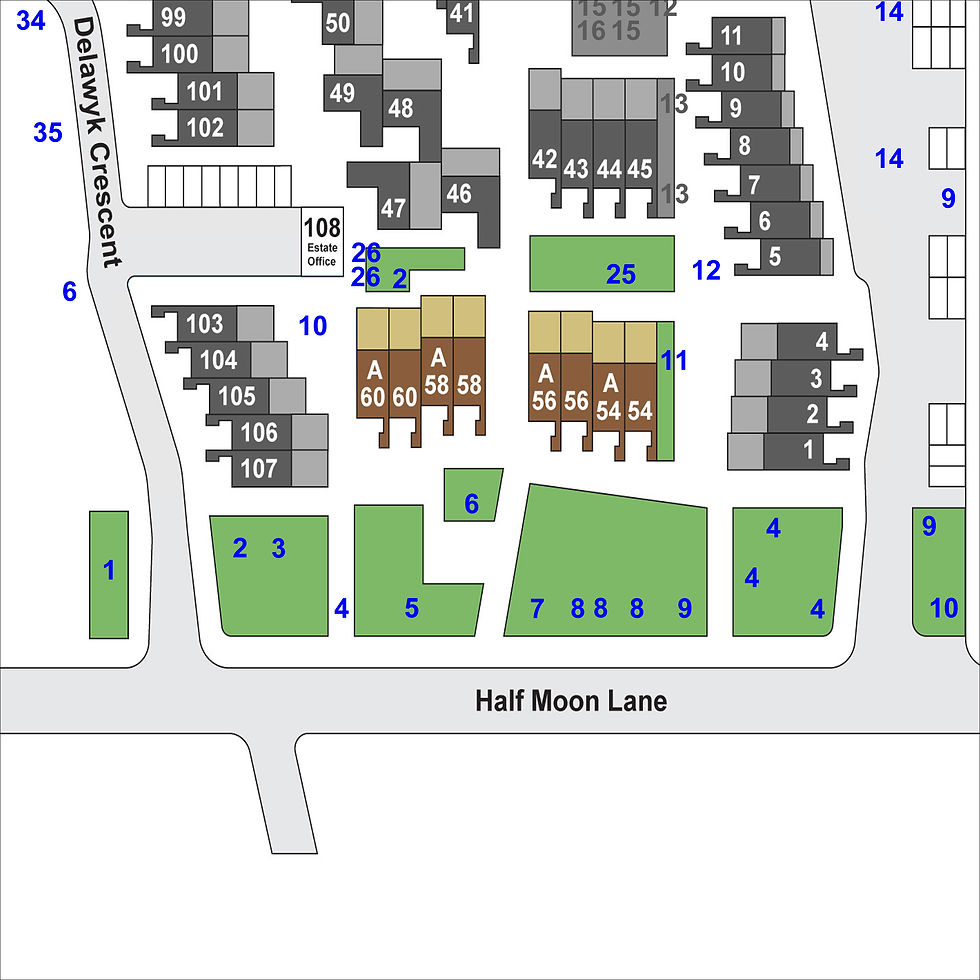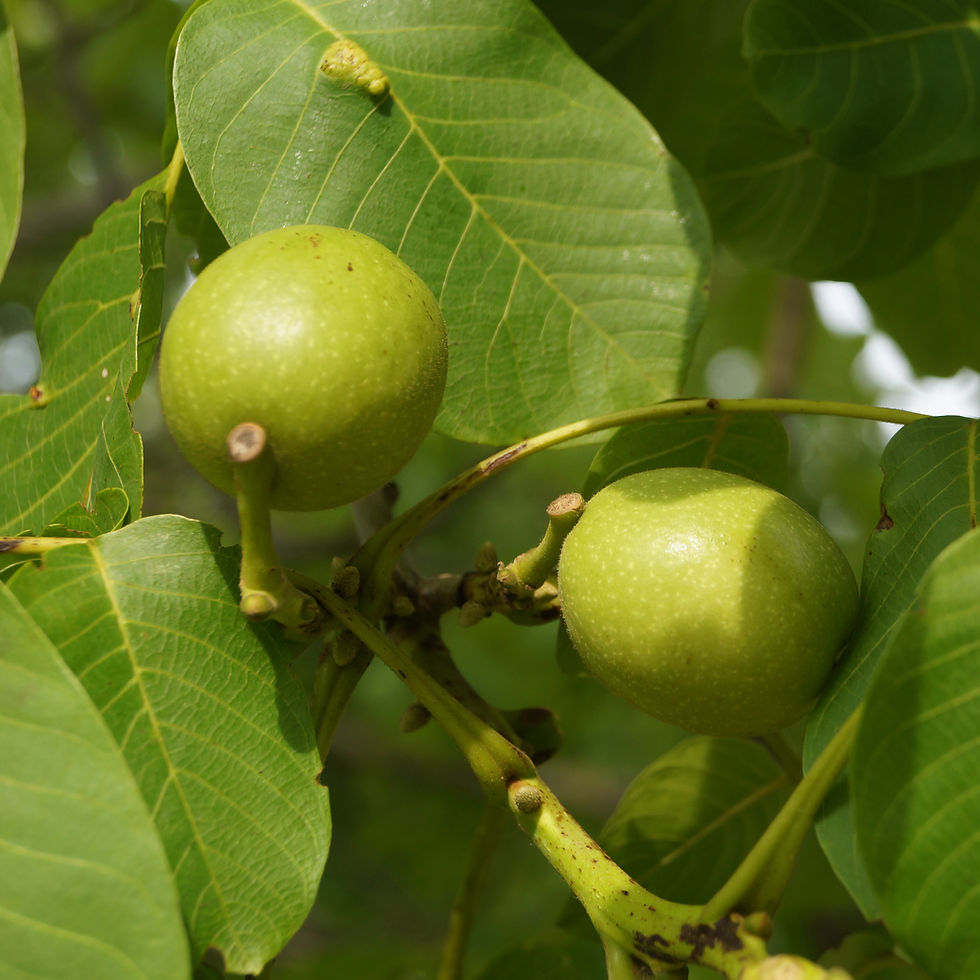At Herne Hill Tree Watch one of our aims is to help people learn the names of our street trees. Once you know what they’re called it becomes easy to find out more about them: their flowers and fruit, for example, their autumn colours, their value to wildlife, their close relatives in the tree family and their hardiness in hot weather and drought. Recognising their names can also make you feel closer to the trees outside your front door so that you see them as true community assets.
A couple of years ago we began producing our online street guides for the Southwark side of SE24 (a job that’s still unfinished). These identify every tree on each of our residential roads and they’re formatted as easy short walks. You start at one end of the road, stroll along one side until you reach the far end and then go back along the opposite side. Every tree along your route is linked to the number of the nearest house and the guide gives you its common name and its botanical Latin name.
That system works well for listing the trees on our conventional residential streets, but it isn’t at all practical for our housing estates (Delawyk Crescent, Denesmead, Pynnersmead, Hillcrest, Carterscroft, Cassinghurst and the green spaces of Sunray Avenue and Casino Avenue) where the houses, flats and lawns aren't laid out to a simple linear plan.
The hardest estate to tackle has been Delawyk Crescent, the biggest in Herne Hill. It’s a cleverly designed 1960s low-rise social housing development where cars and commercial vehicles are restricted to the perimeter road and the pretty grounds are safe for children to play in. The 115 terraced houses are laid out along dozens of winding pathways punctuated with generous green spaces ideal for trees and shrubs.
We’ve identified over 100 trees and 36 different tree species, big and small, in the Delawyk estate, not counting the many trees in people’s front and back gardens. The 36 include all the standard trees planted by the council (standard trees are ones with a recognisable stem, or trunk) and those that are too shrub-like to be called trees but would be if they were pruned to create a clear stem. One or two of these are probably self-seeded, brought into Delawyk by the wind or by birds, like the purple-leaved cherry plum (Prunus cerasifera ‘Pissardii’) near Judith Kerr School.
Trees are everywhere in this little urban oasis, but after trying out other options the only meaningful way we could find to present them to you was to draw a map. So here it is:

The map (which you can also find on our estate maps page) is based on the official green and black estate plan that’s displayed at several locations in the grounds, but it’s been enhanced (with the permission of the estate management) by a graphic designer. The new colours represent houses (dark brown), grassy public areas (green), back gardens (light brown), garages (white) and roads (grey).
The house numbers are shown in white, while every tree planted by Southwark council, and every wild one, is shown on the map as a blue number. Each blue number corresponds to a species listed in the following key - although in the cases of the Leyland cypresses (tree no. 24) and the banana trees (no. 26) there are too many planted close together to indicate every single one.
The species key
Species number | Common name | Botanical name |
1 | Mimosa | Acacia dealbata |
2 | Red Robin Christmas berry | Photinia × fraseri 'Red Robin' |
3 | Red horse chestnut | Aesculus x carnea |
4 | Common yew | Taxus baccata |
5 | English walnut | Juglans regia |
6 | Common olive | Olea europaea |
7 | American sweet gum | Liquidambar styraciflua |
8 | Common lime | Tilia x europaea |
9 | Common horse chestnut | Aesculus hippocastanum |
10 | Sycamore | Acer pseudoplatanus |
11 | Pink crape myrtle | Lagerstroemia indica 'Rosea ' |
12 | Norway maple | Acer platanoides |
13 | Hibiscus | Hibiscus 'Resi' |
14 | Chanticleer pear | Pyrus calleryana 'Chanticleer' |
15 | Common hazel | Corylus avellana |
16 | Common beech | Fagus sylvatica |
17 | Plum | Prunus domestica |
18 | Sour cherry | Prunus cerasus |
19 | Northern Japanese magnolia | Magnolia kobus |
20 | Common hawthorn | Crataegus monogyna |
21 | Fastigiate (upright) hornbeam | Carpinus betulus 'Fastigiata' |
22 | Common ash | Fraxinus excelsior |
23 | Small-leaved lime | Tilia cordata |
24 | Leyland cypress | Cupressus x leylandii |
25 | Tibetan cherry | Prunus serrula tibetica |
26 | Banana | Musa |
27 | Silver birch | Betula pendula |
28 | Dessert apple | Malus domestica |
29 | Fig | Ficus carica |
30 | Yunnan crab apple, veitchii variety | Malus yunnanensis veitchii |
31 | Purple Norway maple | Acer platanoides 'Crimson King' |
32 | Yoshino cherry | Prunus x yedoensis |
33 | Chusan palm | Trachycarpus fortunei |
34 | American lime | Tilia americana 'Redmond' |
35 | Copper beech | Fagus sylvatica Atropurpurea |
36 | Purple-leaved cherry plum | Prunus cerasifera 'Pissardii' |
Using the tree map of the whole estate is a good way to orientate yourself as you walk through, but it does have two drawbacks. First, it packs a lot of data into a small computer screen, and some people may find it hard to read, either online or in an A4-size printout to carry around with you.
Second, Delawyk is a tricky estate to navigate on foot, particularly for visitors and newcomers. The houses all look similar, the crooked paths can take you off in unexpected directions and there are few obvious landmarks. Also the house numbering is eccentric, to say the least.
Just to make things more complicated, there are two numbering systems. Houses 1-107, away from the Half Moon Lane frontage, have an address and postcode of Delawyk Crescent SE24 9JD. But the eight houses behind the big trees on the front lawns are 54 to 60A Half Moon Lane SE24 9, reflecting the numbers of the old houses that used to stand there.
So the result is there are two no. 54s, two 56s, two 58s and two 60s within the same estate, plus a 54A, a 56A, a 58A and a 60A squeezed in for good measure. Baffled? You will be, at first anyway.
To make sense of the maze we’ve divided the main tree map up into nine small ‘neighbourhoods’ of adjoining houses, each with its own selection of interesting trees. These pocket maps are at a much larger scale than the full version, with bigger text, and each has the species key attached. We hope you can follow them comfortably. Try them out by clicking on these links:
The basic format of the mini-maps is the same as the main map: green for grassy public areas, dark brown for houses, light brown for private gardens and white for garages. But there's a lot of overlap between these nine sectors and we've shaded these overlapping areas in grey.
Let’s have a closer look at the little map showing the attractive front lawns immediately behind Half Moon Lane and the row of eight houses directly behind them. This is the area stretching from the Delawyk Crescent perimeter road next to the telephone box (roughly opposite the junction of Half Moon Lane and Howletts Road) over to the other end of the crescent where it emerges close to the corner of Ruskin Walk.

Here are images of some of the trees you’ll see in this sector:
The yews (no. 4 on the map)

There are four common yews (Taxus baccata) on the front lawns and, barring redevelopment, they can expect to stay there for a very long time. Yews can live for up to 3,000 years, often surviving as a gnarled and wizened hollow shell. Every bit of them is toxic to humans yet they’re traditionally planted in churchyards for reasons that are unclear. The extremely slow-growing yew is one of only three conifers on the streets of Herne Hill. The others are both on Casino Avenue: a dawn redwood (Metasequoia glyptostroboides) at no. 7/9 and a swamp cypress (Taxodium distichum) at 53.
The walnut (no. 5 on the map)

This English walnut (Juglans regia) is the only one of its kind in Herne Hill that we know of, although there may be some in private gardens. The green husk of the fruit will split in autumn, revealing the shell inside. When you've dried the shell you'll need an old-fashioned nutcracker to get to the wrinkly edible kernel inside. Walnut trees first arrived in Britain some 2,000 years ago, brought by the Romans for their nuts. By the 17th century they became an object of desire among the wealthy for their very fine (and very expensive) timber and veneers, widely used in the best Georgian furniture before mahogany took over.
The sweet gum (no. 7 on the map)

This fiery looking tree, almost the same colour as the postbox just over the fence, is now the only living American sweet gum (Liquidambar styraciflua) at Delawyk. Another, on the perimeter road, has died in the last few years and we’ll be asking the tree officers for a rapid replacement. Beyond Delaywk this is one of the commonest trees in Herne Hill, rightly admired for its stunning, long-lasting colours in autumn, when the palmate (five-fingered) leaves turn from bright green to shades of yellow, orange, red and purple. Its strange-looking fruit stays on the branches for over a year, turning from green to dark brown as it dries out.
The horse chestnuts (no. 9 on the map)

A few feet away from where the sweet gum now stands there lived, until 2018, a very large common horse chestnut tree (Aesculus hippocastanum), just behind the white picket fence on Half Moon Lane. It was one of a pair on the front lawn. But horse chestnuts are vulnerable to diseases and pests like the leaf miner insect and a number of big trees in Dulwich and Herne Hill were taken down around this time. Its one-time neighbour, pictured here in full bloom, is happily still going strong, along with two others nearby. There's also a more disease-resistant red horse chestnut (Aesculus carnea) at the front of the estate.
The perimeter road
Many of Delawyk’s trees are found on the perimeter road that skirts the well-wooded Judith Kerr primary school, the red-brick railway viaduct from North Dulwich to Tulse Hill, and the postwar flats on Burbage Road, between the doctors’ surgery and the railway bridge. Some of the roadside verges are just concreted for parking, but there is also a lot of grass cover where trees can grow.
A word for mobile users
Unfortunately there’s no way to use this map on a smartphone, so you’re going to have to print out the page you need before setting off for some tree-watching in Delawyk. Logically, the next step for us might be a fully digitised map where you can click on a symbol and instantly bring up all the information about that particular tree, without having to cross-refer to a key. That could potentially be formatted to work on a mobile. But first we need to work on basic maps of the many trees of our other housing estates.
You can find out more about Delawyk Crescent on the estate website at http://www.delawyk.org.
Comments